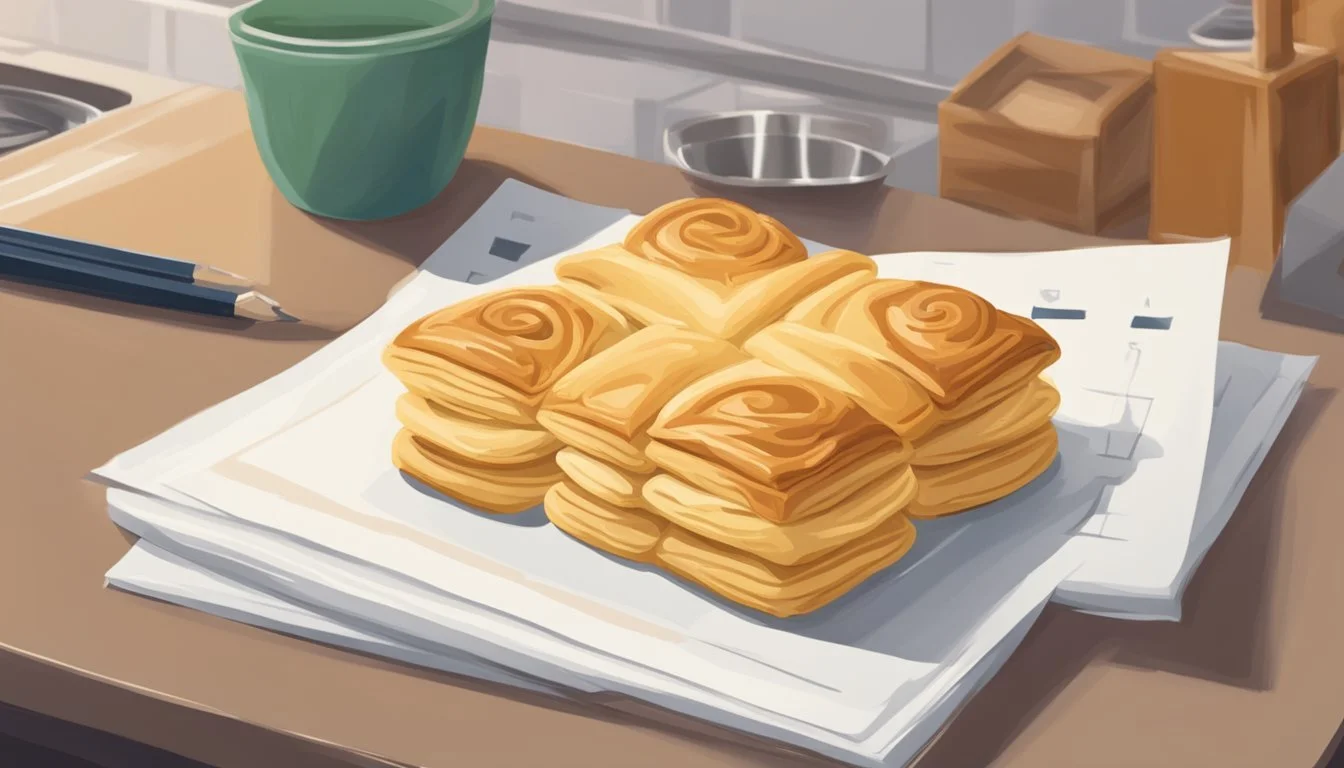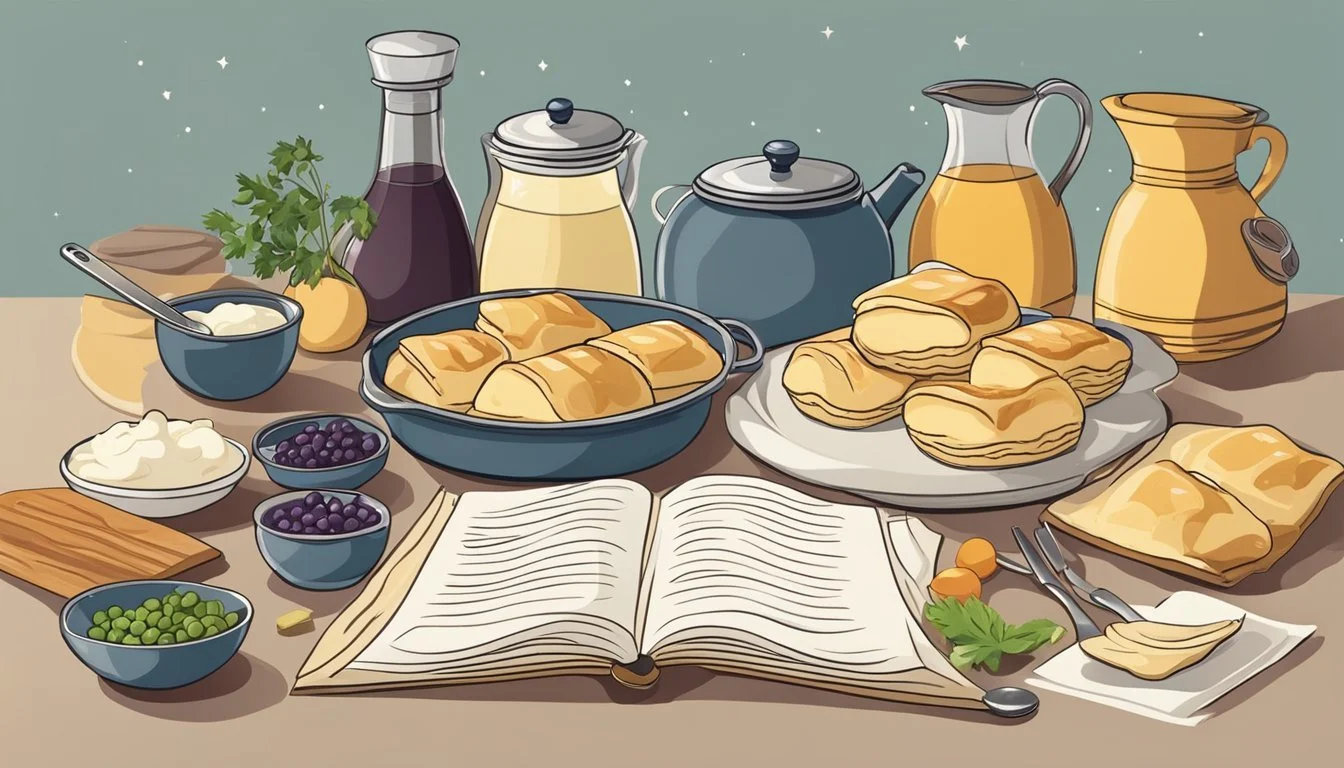Does Puff Pastry Go Bad?
Storage Tips and Shelf Life
Puff pastry, a versatile and delicious ingredient, can indeed go bad if not stored correctly. While frozen puff pastry can last for several months, baked puff pastry can spoil within 48 hours if kept in the fridge due to moisture accumulation. Proper storage is key to maintaining its quality and preventing it from becoming dry, hard, or soggy.
The shelf life of puff pastry depends on various factors, including storage conditions and the quality of the ingredients. Refrigerated puff pastry is prone to spoilage from moisture, causing it to lose its flaky texture. Freezing puff pastry helps preserve its integrity, ensuring it remains fresh and ready to use whenever needed.
Understanding the signs of spoilage is crucial for any home cook. Look for changes in texture, smell, and appearance to determine if your puff pastry is still good. With the right storage practices, you can extend the life of your puff pastry and enjoy its delicious, flaky layers in your favorite recipes.
Understanding Puff Pastry
Puff pastry is a type of laminated dough consisting of alternating layers of dough and butter, resulting in a tender, flaky texture when baked. This section explores its composition, various types, and the lamination process.
Composition and Characteristics
Puff pastry is mainly composed of butter, flour, and water. These simple ingredients create a dough that, when baked, achieves a flaky, airy texture.
The use of cold butter ensures that it does not melt into the dough, which is essential for the lamination process. The high fat content in butter helps to create distinct flaky layers. The dough must be handled with care to prevent the butter from melting, which could compromise the texture.
Types of Puff Pastry
There are several types of puff pastry, including store-bought frozen puff pastry and homemade puff pastry.
Frozen puff pastry is convenient and widely used in home kitchens. It usually comes pre-rolled and can be found in the freezer section of grocery stores. Homemade puff pastry, though more labor-intensive, offers a richer flavor and texture due to the use of high-quality ingredients.
The Lamination Process
The key to puff pastry's unique texture is the lamination process, which involves repeatedly rolling and folding the dough to create multiple thin layers.
After the initial dough, or détrempe, is mixed, cold butter is added and the dough is rolled out and folded several times, typically in a process called turns. Each turn increases the number of layers, contributing to the pastry's light and airy texture when baked.
In summary, the composition, types, and lamination process are crucial for achieving the characteristic flakiness and lightness of puff pastry. Proper handling and technique are vital to ensure the best results.
Proper Storage Techniques
Properly storing puff pastry can significantly extend its shelf life and maintain its quality. Key techniques include short-term refrigeration and freezing for longer-term storage.
Short-Term Storage
For short-term storage, puff pastry should be kept in the refrigerator. It should remain in its original packaging or be wrapped tightly in plastic wrap to prevent any exposure to air, which can dry it out or lead to spoilage. Typically, puff pastry can last for about 2-3 days in the refrigerator when stored correctly.
It's essential to place the wrapped puff pastry in a part of the fridge where the temperature is consistent. Avoid placing it in the fridge door, as the frequent opening and closing can cause temperature fluctuations. This method helps keep the pastry fresh and ready to use at short notice.
Freezing and Thawing
For longer-term storage, puff pastry can be stored in the freezer. Before freezing, ensure the puff pastry is wrapped securely in plastic wrap or aluminum foil and placed inside a freezer-safe container to protect it from freezer burn. Puff pastry can generally be stored in the freezer for up to 3 months.
When it’s time to use the frozen puff pastry, it's crucial to thaw it properly. Place the frozen pastry in the refrigerator overnight for a slow, even thaw. If in a hurry, it can also be thawed at room temperature for about 30 minutes, though this might affect the texture slightly. Avoid using a microwave for thawing, as it can cause the layers to become soggy and compromise the pastry's quality.
Signs of Spoilage and Quality Decline
Puff pastry can exhibit several signs of spoilage and quality decline that are important to recognize. These include visual indicators, changes in smell and taste, and alterations in texture.
Visual Indicators
Visual indicators are often the first signs of spoilage in puff pastry. Mold growth is a noticeable sign, presenting as white, green, or black spots on the surface. Discoloration, such as gray or yellowish hues, can also indicate that the pastry has gone bad.
Look for signs of freezer burn in frozen puff pastry, which appear as white, icy patches. This can affect the quality and texture, even if the pastry is not unsafe to eat. Opened puff pastry is more susceptible to these visual changes due to exposure to air and moisture.
Smell and Taste Changes
Changes in smell and taste are critical indicators of puff pastry spoilage. A rancid smell suggests that the fats within the pastry have deteriorated. Similarly, a sour taste is a clear indication that the pastry is no longer safe to eat.
An off smell, even if it is not immediately rancid, warrants caution. Sometimes, the pastry may not show visible signs but might emit an unpleasant odor. Fresh puff pastry should have a neutral or slightly buttery smell. Any deviation from this is a red flag.
Texture Alterations
Texture alterations can signal that puff pastry is past its prime. When the pastry becomes slimy or sticky, it is a sign of microbial activity and spoilage. Stored properly, puff pastry should retain its firm and pliable consistency.
Changes in texture such as becoming excessively dry or crumbly are also worth noting. While dryness may not be dangerous, it does suggest a decline in quality. Frozen puff pastry should be checked for changes in texture once thawed, ensuring it has not become hard or brittle.
Shelf Life and Expiration
Puff pastry has a limited shelf life, influenced by storage conditions and the date printed on the packaging. Recognizing expiration dates and understanding how storage impacts quality are essential for safe consumption.
Determining Expiration Date
Expiration dates on puff pastry packaging serve as a guideline for optimal consumption. These dates indicate when the product is expected to be at its best quality.
Frozen puff pastry usually has a longer shelf life compared to fresh or refrigerated dough. Typically, frozen varieties can last several months if stored at a constant, cold temperature.
In contrast, fresh puff pastry may only last a few days to a week when kept at room temperature. It's crucial to adhere to the printed label, as the quality of expired puff pastry often deteriorates beyond this period.
Effects of Prolonged Storage
Prolonged storage of puff pastry, whether frozen or at room temperature, results in a gradual decline in quality. Frozen puff pastry is safe to consume for an extended period, but even when stored correctly, it may eventually lose its flakiness and buttery flavor.
Fresh puff pastry, left at room temperature, spoils much faster. After a few days, it may exhibit signs of spoilage, such as an off smell or a change in texture. The dough can become sticky or dry, signaling that it is no longer good to use.
Proper storage, such as keeping the product in an airtight container or appropriate freezer conditions, helps to mitigate these effects, but cannot indefinitely prevent quality decline.
Safe Consumption Guidelines
To ensure food safety, follow specific guidelines for consuming puff pastry. Always check the expiration date and inspect the puff pastry for any signs of spoilage before use. If there is an unusual odor or visible mold, discard the product immediately.
For frozen puff pastry, thaw only the amount needed and keep the remaining dough frozen. Once thawed, it should be used within a few hours to maintain optimal texture and taste.
Fresh puff pastry should be consumed within a few days of purchase. Storing it in a cool, dry place and avoiding drastic temperature changes can help preserve its quality for a little longer.
Best Practices for Handling Puff Pastry
To achieve a light and flaky texture, it is crucial to follow proper procedures for preparing, baking, reheating, and serving puff pastry. Below are detailed practices for each step.
Preparation and Baking
Thawing: Thaw puff pastry in the refrigerator overnight or at room temperature for about 30 minutes. Ensure the pastry dough is pliable before rolling.
Rolling: Use a lightly floured surface and rolling pin. Roll the dough evenly to maintain its layers, which are essential for flakiness.
Baking: Preheat the oven to a high heat, typically 400°F to 425°F. Bake until the pastry achieves a golden brown color. This high heat helps the laminated dough create steam, leading to its airy texture.
Handling: Avoid overworking the dough to prevent breaking down the layers. Handle with care and chill if the butter starts to melt. Place the pastry in the oven immediately after shaping to lock in its structure.
Reheating and Serving
Reheating: To reheat, place puff pastry in a preheated oven at 350°F for a few minutes until it becomes crisp again. Avoid using a microwave, as it can make the pastry soggy.
Serving: Serve puff pastry warm to highlight its flakiness and rich taste. Pair it with sweet or savory fillings, depending on the dish.
Storage: Store baked puff pastry in an airtight container. If properly sealed, it can maintain its quality for about 2 days. For longer storage, freeze the pastry and reheat it in the oven before serving.
These practices ensure the pastry retains its quality from preparation to serving.
Culinary Applications and Recipe Ideas
Puff pastry is a versatile ingredient used by both home cooks and professional chefs to create a variety of delectable dishes. Its flaky pastry texture and ability to puff up make it ideal for both sweet and savory recipes.
Classic Recipes Using Puff Pastry
Turnovers are a popular classic. These sweet or savory bite-sized pastries can be filled with fruits, meats, or cheeses. To create apple turnovers, one needs to fill the puff pastry dough with spiced apple filling and then bake until golden and flaky.
Palmiers represent another traditional use. These elegant pastry cookies require simple ingredients: puff pastry and sugar. Rolling the pastry with sugar, and then baking it creates a crispy, caramelized treat.
Beef Wellington is a renowned dish where puff pastry encases a beef tenderloin. Coating the meat with mushroom duxelles before wrapping in pastry ensures a moist and flavorful interior.
Tarts, both sweet and savory, greatly benefit from puff pastry. For a savory option, a tomato and basil tart can be prepared by layering sliced tomatoes, fresh basil, and olive oil on a puff pastry base.
Creative Variations and Modern Takes
Modern cuisine often reinvents classic dishes. For instance, puff pastry pizza is a quick and creative variation. Using puff pastry as the base, layer with tomatoes, cheese, and toppings of choice, then bake until the pastry puffs up.
Puff pastry cups filled with seafood, mushrooms, or chicken provide an elegant appetizer or main dish. These bite-sized cups can be filled and then baked until the pastry turns flaky and golden.
Vegan puff pastry, made without traditional butter, allows for plant-based recipes. It is used to create spinach and artichoke turnovers which are both delicious and vegan-friendly.
Desserts such as chocolate-filled pastries or fruit danishes offer sweet alternatives. Innovative fillings like spiced pumpkin or matcha cream showcase the pastry's ability to accommodate diverse flavors.






